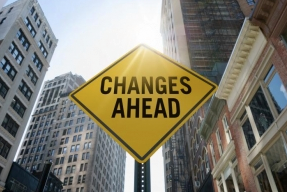Today’s consumers have much more demanding expectations regarding their shopping experience than those of previous generations. While our grandparents were willing to wait weeks to receive something (by mail) that they ordered through the Sears catalog, buyers today expect a seamless, fast and free shopping experience. More often than not, today’s packages arrive on our doorstep only after traveling omnichannel logistics routes that include multiple pickup locations, distribution centers, warehouses or stores.
A survey conducted by Forbes of 433 senior industry leaders in logistics, supply chain, and transportation examined how they are incorporating new technologies in their efforts to meet fast-evolving customer needs and interests.
https://www.forbes.com/forbes-insights/our-work/transportation-2023/
As a recruiter of CDL drivers for trucking companies, DriverSource understands the increased pressures our clients are facing. A strong economy is fueling growth across all sectors. Freight tonnage moved by trucks is forecast to grow 27% between 2016 and 2027. While the expanding capacity means more need for our placement services, we also know that the demand is making OEM production of new trucks hard to meet.
The survey cited four key forces driving change in transportation services. They include:
- Technology Advances
Half of the respondents cited the impact of new technologies on transportation operations. The transformative influence of artificial intelligence, IoT/telematics, machine learning, data mining, – all are working to change every part of logistics operations as they bring better decision-making capabilities related to those real-time questions regarding “which routes” and “which carriers.” For trucking alone, it is hard to overestimate the pending impact of drone deliveries, blockchain, and autonomous vehicles on fleet operations and strategies.
- A Red-Hot Economy
A strong economy, driven by tariffs and reforms, has affected transportation patterns and increased demand for freight services. While this sounds good, one trucking CEO cautioned “We see it daily, the economy is rolling. There’s heightened demand for our services.” But, “capacity is extremely tight, so the industry doesn’t always have the trucks it needs right where and when they’re needed.” In the final analysis, “there are more freight and more trucks than there are drivers to drive them. “
- The “Amazon” Effect
E-commerce has trained consumers to expect two-day or even next-day delivery of orders. What used to take only two, three, or maybe four touches before the goods were in the hands of the end-consumer, now require seven, eight or nine touches through multiple warehouses and forward positions. In short, the “final mile is being redefined almost every day.” But, it’s not just the online retailers who are putting pressure on freight deliveries. There are geographically diverse retailers like Walmart, Target, and Walgreens who are also focused on improving the customer experience. They, too, are raising the bar on expectations for on-time delivery and accuracy standards for transportation services.
- Regulation
Forty-six percent of respondents cited regulations, such as the use of ELDs, as having major an impact on operations. The eleven-hour limit for driving during a fourteen-hour period is something some executives think doesn’t always make sense. “What if the driver is on a bridge or stuck in traffic or is only a few minutes away from a proper rest stop?” Many feel the previous paper-based system offered a driver some flexibility. Losing this flexibility has resulted in higher prices in some cases.
Bill D for DriverSource


